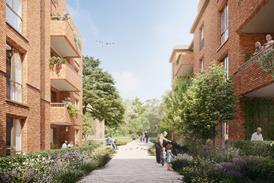The effect of the permitted development rights (PDR) regime has been remarkable in giving many obsolete office buildings a new lease of life - usually as residential developments.

There must now be a case for exploring the same approach with many of the UK’s secondary shopping centres. These are invariably major town centre structures that have been rendered redundant by more recently built neighbouring centres or out-of-town development.
They represent an active barrier to regeneration and we must look at how they can have a future that makes a positive contribution.
Some owners are simply demolishing redundant malls but this is a strategy that only mitigates the owner’s losses and does not benefit the wider environment and community.
What if we took a fresh look at these buildings and saw the inherent virtues of their large footprints, extensive car parking and close proximity to places of employment? How might we make these truly mixed-use developments? Perhaps with resi on the upper levels with convenience retail and eating and drinking at street level?

Some of the offices that have been translated to resi provide a ‘co-living’ environment with shared spaces and resources. Similarly, adapting shopping centres shouldn’t be written off just because the living spaces they could create wouldn’t fit an expected norm.
The government’s housing white paper has shone a spotlight on issues such as this. Although the paper seeks to protect the green belt, there is increasing pressure to simply loosen planning controls on the development of the natural buffer zones around our towns and cities. This must be resisted.
A sensible extension of PDR would encourage developers to focus on towns and city centres where we estimate there is as much as 30% of retail space that has become superfluous due to changing retail spending patterns. Replacing this retail accommodation with resi would improve efficiency.

PDR could be a catalyst for absorbing excess retail floorspace while providing much-needed land for resi and reinvigorating towns by increasing the catchment size for remaining retail.
The fault line in this vision is that local authorities are now heavily dependent on income from business rates. Accordingly, any strategy that replaces business properties with resi will inevitably entail a proportionate reduction in funding.
Taking a fresh look at failing shopping centres isn’t the entire answer to our in-town problems but it could be a substantial catalyst. Only the government can deliver the platform to start this revolution. It will be interesting to see if it has the vision.






























No comments yet